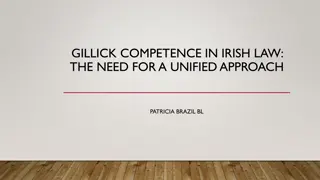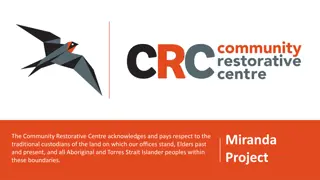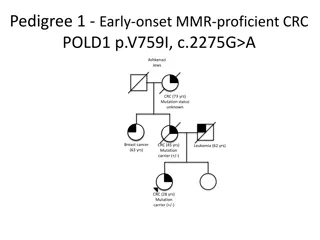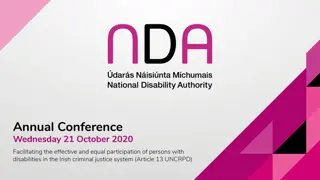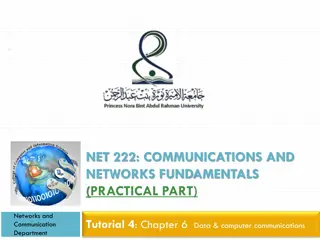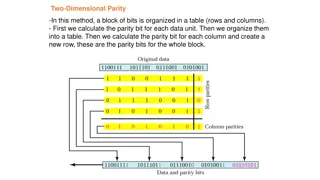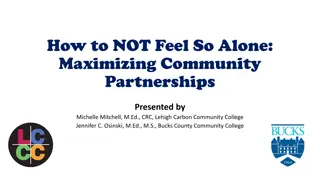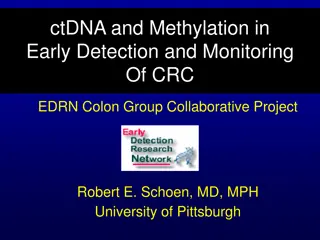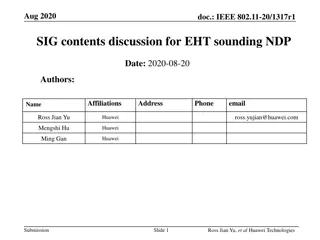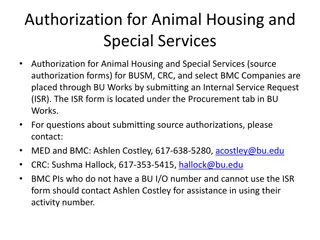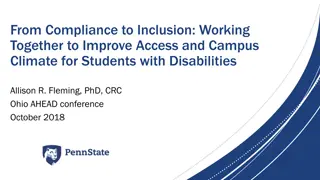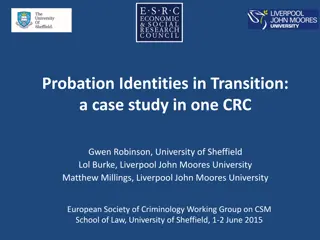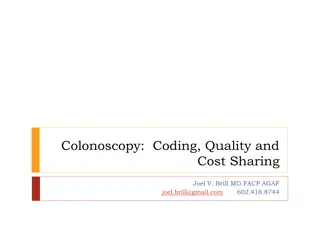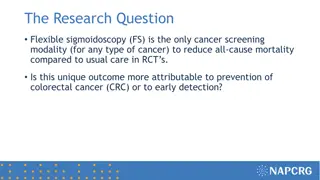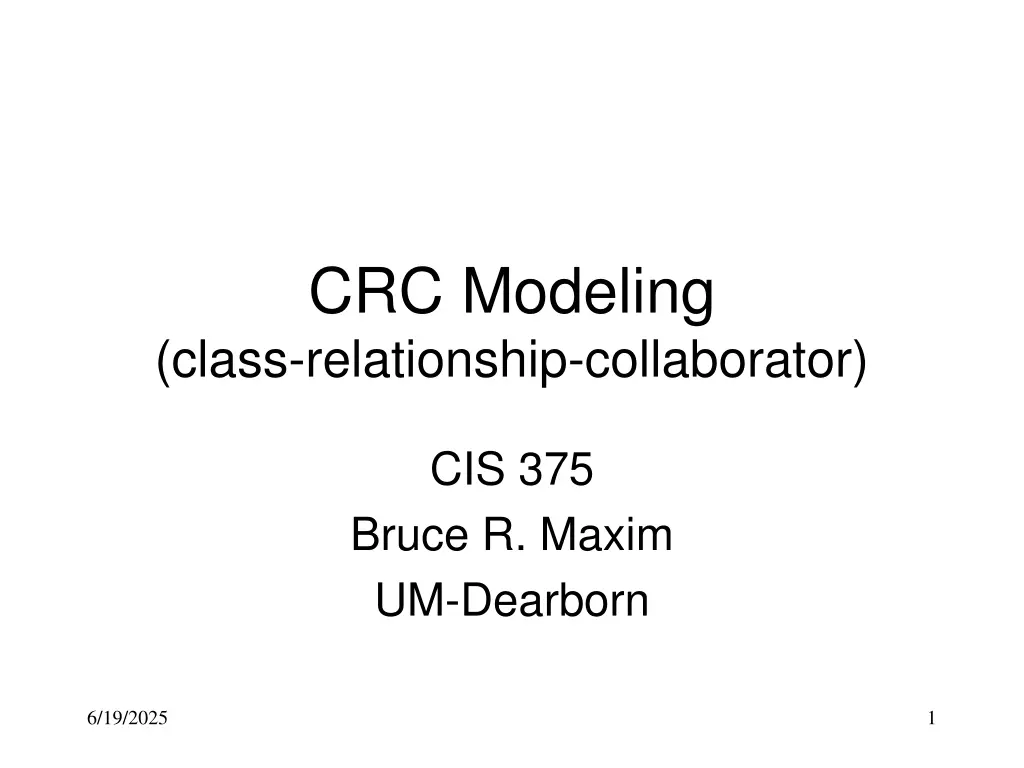
CRC Modeling in Software Engineering
"Learn about CRC Modeling, Class-Relationship-Collaborator approach, and Object-Oriented Analysis tasks to design software systems effectively. Understand the use of CRC cards, UML diagrams, and modeling techniques for requirements gathering and system design. Explore steps for creating CRC models and defining class responsibilities and collaborators."
Download Presentation

Please find below an Image/Link to download the presentation.
The content on the website is provided AS IS for your information and personal use only. It may not be sold, licensed, or shared on other websites without obtaining consent from the author. If you encounter any issues during the download, it is possible that the publisher has removed the file from their server.
You are allowed to download the files provided on this website for personal or commercial use, subject to the condition that they are used lawfully. All files are the property of their respective owners.
The content on the website is provided AS IS for your information and personal use only. It may not be sold, licensed, or shared on other websites without obtaining consent from the author.
E N D
Presentation Transcript
CRC Modeling (class-relationship-collaborator) CIS 375 Bruce R. Maxim UM-Dearborn 6/19/2025 1
OOA Tasks 1. Basic user requirements must be communicated between the customer and the software engineer. Use CRC cards to find classes, responsibilities, and collaborators. Use UML (unified modeling language) diagrams to record class relationships. Document classes and member functions. Model object behavior Reapply 1 through 5 iteratively until model is complete 2. 3. 4. 5. 6. 6/19/2025 2
OOA Generic Steps Elicit customer requirements for system Identify scenarios or use cases Select classes and objects using basic requirements as a guide Identify attributes and operations for each system object Define structures and hierarchies that organize classes Build object-relationship model Build object-behavior model Review OOA model against use-cases (scenarios) 6/19/2025 3
Use Case Objectives Define the functional and operational requirements of system by defining a scenario of usage agreed upon by the end-user and software engineer Provide an unambiguous description of how the end-user and system interact with one another Provide a basis for validation testing 6/19/2025 4
Class-Responsibility-Collaborator (CRC) Modeling Develop a set of index cards that represent the system classes One class per card Cards are divided into three sections class name class responsibilities class collaborators Once a complete CRC card set is developed it is reviewed examining the usage scenarios 6/19/2025 5
CRC Card 6/19/2025 6
Creating a CRC Model Find 3 to 5 main classes and give them meaningful names Find responsibilities (what a class does and what information does it retain) Define collaborators (classes that may need to be defined to respond with requests for information or requests to perform tasks) Move the cards around on the table and see how they fit together 6/19/2025 7
Criteria CRC Class Inclusion Class information (data) should be retained Class Provides needed services Contains multiple attributes Common set of attributes apply to all object instances Common set of operations apply to all object instances External entities that produce or consume information 6/19/2025 8
Criteria for Defining Collaborators Any time a class cannot fulfill a responsibility on its own it needs to interact with another class A server object interacts with a client object to fulfill some responsibility 6/19/2025 9
Reviewing CRC Models - 1 Each review participant is given a subset of the CRC cards (collaborating cards must be separated) All use-case scenarios and use-case diagrams should be organized into categories Review leader chooses a use-case scenario and begins reading it out loud Each time a named object is read a token is passed to the reviewer holding the object's card 6/19/2025 10
Reviewing CRC Models - 2 When the reviewer receives the token, he or she is asked to describe the responsibilities listed on the card The group determines whether one of the responsibilities on the card satisfy the use- case requirement or not If the responsibilities and collaborations on the index card cannot accommodate the use- case requirements then modifications need to be made to the card set 6/19/2025 11
CRC Model for ATM System Form a group of 4 and look over the ATM user stories Create a set of CRC cards for the ATM system Determine the primary responsibilities for each card (both function and information) Determine the set of collaborations needed to allow each class fulfill its responsibilities 6/19/2025 12
Deriving Object-Relationship Model Was it easy to model a network of collaborators once the CRC cards are created? Would it have been better for you to create your own use case before reviewing the CRC card model? Did you make it to the end of your use case? How many new classes did you need to define? Did you need to move responsibilities? Do you believe we could continue the process until a complete object-relationship model has been produced? 6/19/2025 13
Allocating Responsibilities to Classes (Refactoring) Distribute system intelligence evenly State each responsibility as generally as possible Information and its related behaviors should reside within the same class Localize all information about one entity in a single class Share responsibilities among related classes when appropriate 6/19/2025 14

